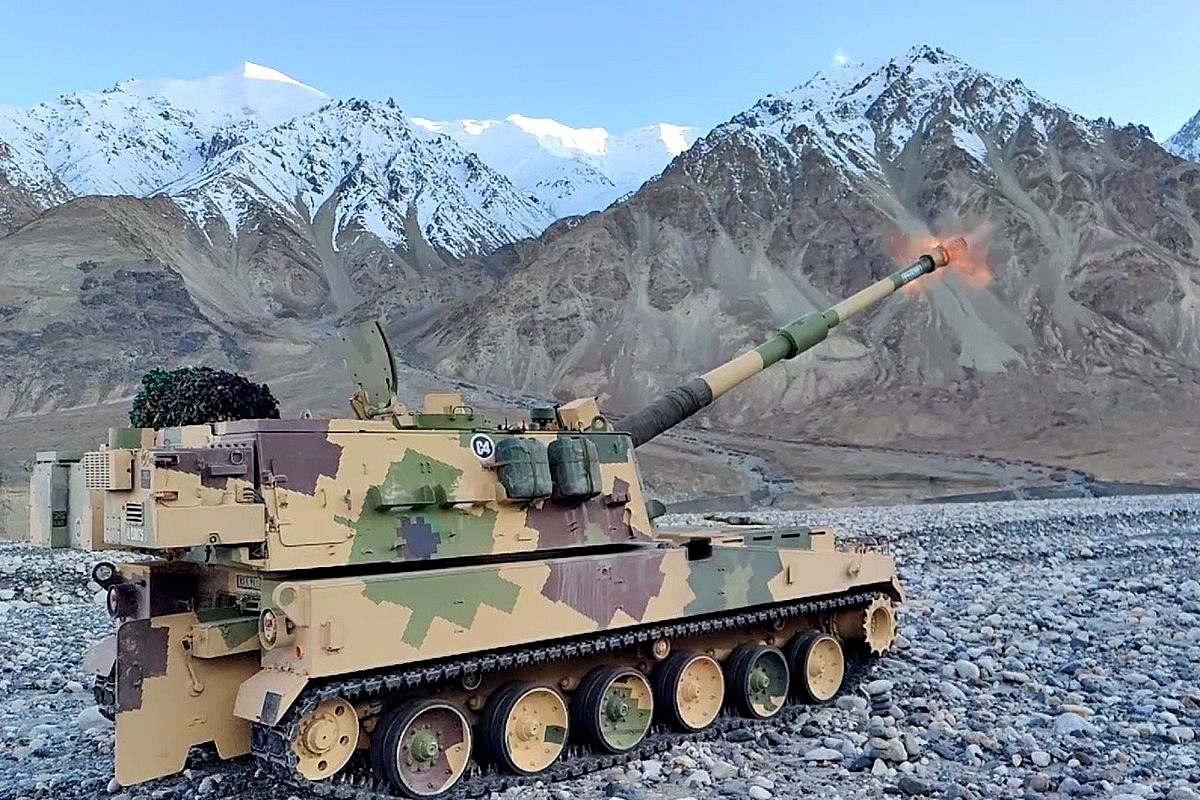Defence
Army Conducts Massive Artillery Exercise In Arunachal's Tawang, Where India-China Troops Clashed Last December

India has deployed a regiment of K-9 Vajra howitzers in Ladakh.
The Indian Army recently conducted a massive artillery firing exercise “Buland Bharat” in Arunachal Pradesh's Tawang and West Kameng districts, where the Indian Army and Chinese PLA clashed in December last year.
As part of the exercise, the Army fired various large caliber 155 mm artillery guns including 155 mm Bofors, M-777 Ultra light howitzers.
105 mm field guns, and 120 mm mortars were also tested by the Army to hone its integrated surveillance and firepower skills. This exercise was aimed at improving their war-fighting capabilities and synergised contingency operations.
The Indian and Chinese Army are locked in an almost four-year long border standoff since the June 2020 clash in Galwan valley.
The Indian Army in response to the standoff has deployed a wide range of artillery guns, including old 105 mm field guns and Bofors, 'upgunned’ Dhanush and Sharang guns, Pinaka and Smerch multi-launch rocket systems, new M-777 ultra-light howitzers, and “winterised” K-9 Vajra self-propelled tracked guns along the China border.
The Indian Army is also planning to raise dedicated specialized agencies in each of its six operational or regional commands across the country to handle the cyberspace domain.
The Army and IAF had been undertaking a series of exercises to test battle-readiness in the eastern sector due to the escalating tensions between China and India.
The Buland Bharat exercise involved the “synergised application” of surveillance and firepower capabilities of the artillery and the infantry in close coordination with the Special Forces, aviation elements, and Central Armed Police Forces, an official source said.
The troops and equipment were “tested in simulated war conditions” during the exercise after a month-long training in the high-altitude areas and extreme weather conditions, the source added.
Earlier in March as well, the Army and the Air Force conducted 'Vayu Prahaar' exercises to practice moving large number of specialised units to China border quickly using IAF's heavy lift assets like C-17 Globemaster III, C-130J-J30 Super Hercules, and IL-76 heavy lift aircraft.
Furthermore, the Army and the Air Force conducted yet another exercise along the China border in Arunachal Pradesh to practise moving special forces close to Line of Actual Control (LAC) using fixed and rotary-wing (helicopters) platforms.
Apart from these exercises, India is also strengthening its offensive as well as defensive capabilities in the region to protect the strategically vulnerable Siliguri Corridor.
For instance, the Indian Army has deployed BrahMos supersonic cruise missiles with “steep-dive, trajectory manoeuvre, and top-attack capabilities” for mountain warfare in Arunachal.
In addition, the IAF has deployed the new Russian-origin S-400 Triumf surface-to-air missile system, which can defeat enemy fighter jets, cruise, and ballistic missiles from ranges exceeding 400 kilometres.
The Army has also operationalized its first `Abhra’ medium-range surface-to-air missile (MRSAM) regiment in the 33 Corps area, for the defence of Sikkim and Siliguri corridor. The system was inducted in early february.
The Indian Army's recent capability additions in the North-Eastern region and the entire Line of Actual Control (LAC) demonstrate its preparedness to counter any potential aggression from China.
Support Swarajya's 50 Ground Reports Project & Sponsor A Story
Every general election Swarajya does a 50 ground reports project.
Aimed only at serious readers and those who appreciate the nuances of political undercurrents, the project provides a sense of India's electoral landscape. As you know, these reports are produced after considerable investment of travel, time and effort on the ground.
This time too we've kicked off the project in style and have covered over 30 constituencies already. If you're someone who appreciates such work and have enjoyed our coverage please consider sponsoring a ground report for just Rs 2999 to Rs 19,999 - it goes a long way in helping us produce more quality reportage.
You can also back this project by becoming a subscriber for as little as Rs 999 - so do click on this links and choose a plan that suits you and back us.
Click below to contribute.
Latest